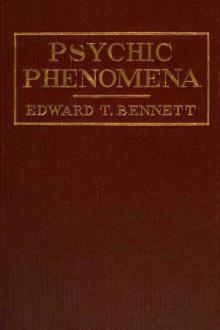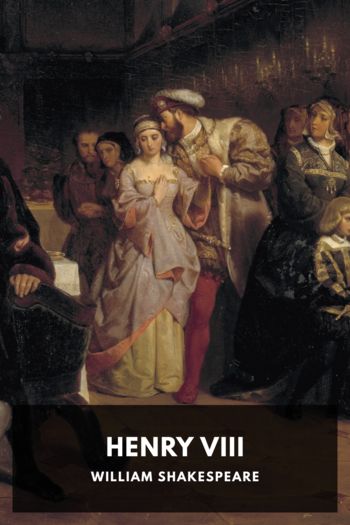Don Quixote by Miguel de Cervantes Saavedra (electric book reader TXT) 📕

Description
Don Quixote is a novel that doesn’t need much introduction. Not only is it widely considered the greatest Spanish literary work of all time, one of the greatest literary works in history, and a cornerstone of the Western literary canon, it’s also considered one of the first—if not the first—modern novels.
This Standard Ebooks edition is believed to be the first ebook edition of Don Quixote to feature a full transcription of translator John Ormsby’s nearly 1,000 footnotes. Ormsby as an annotator deftly explains obscure passages, gives background on the life and times of 1600s Spain, references decisions from other contemporary translators, and doesn’t hold back from sharing his views on the genius—and flaws—of Cervantes’ greatest work.
The story is of the eponymous Don Quixote, a country noble who, in his old age, reads too many chivalric romances and goes mad. After convincing his grubby servant, Sancho Panza, to join him as his squire, he embarks on an absurd and comic quest to do good and right wrongs.
Today Don Quixote’s two volumes are published as a single work, but their publication came ten years apart. Cervantes saw great success with the publication of his first volume, and appeared to have little desire to write a second volume until a different author wrote a spurious, inferior sequel. This kicked Cervantes into gear and he wrote volume two, a more serious and philosophical volume than the largely comic first volume.
Despite being written in 1605 and translated in 1885, Don Quixote contains a surprising amount of slapstick laughs—even for the modern reader—and narrative devices still seen in today’s fiction, including meta-narratives, frame narratives, and metafiction. Many scenes (like Quixote’s attack on the windmills) and characters (like Sancho Panza and Lothario) are so famous that they’re ingrained in our collective culture.
Read free book «Don Quixote by Miguel de Cervantes Saavedra (electric book reader TXT) 📕» - read online or download for free at americanlibrarybooks.com
- Author: Miguel de Cervantes Saavedra
Read book online «Don Quixote by Miguel de Cervantes Saavedra (electric book reader TXT) 📕». Author - Miguel de Cervantes Saavedra
Proverb 170. This is the first of Sancho’s frequent volleys of random proverbs. ↩
Proverb 247. ↩
Proverb 55. ↩
Proverb 73. ↩
Proverb 226: estacas—literally, stakes or pegs on which to hang them; expressive of unreasonable expectations. ↩
Proverb 195. ↩
Beltenebros, i.e. “fair-obscure.” Clemencín suggests that the Peña Pobre (so called because those who sojourned there had to live in extreme poverty) was Mont St. Michel, but Jersey would suit the description better, as it is said to be seven leagues from the coast of the Insula Firme, which was clearly the mainland of Brittany or Normandy. ↩
Probably an allusion to the “green tree” and the “dry.” ↩
In the original it is “for more than four days,” to which some commentators, Hartzenbusch among them, object, as not more than one day had passed since the encounter with the barber. But “more than four” is a very common phrase to express indefinitely a considerable number, and it is more probably used here vaguely by Sancho in the sense in which I have rendered it. ↩
For the character of Orlando’s insanity, see the Orlando Furioso, canto xxiii st. 130 et seq. ↩
The hippogriff was the winged horse on which Astolfo went in quest of information about Orlando. Frontino was the name of the destroyer of Ruggiero, Bradamante’s lover. ↩
Corn in Spain is not threshed, as we understand the word, but separated from the ear by means of the trilla, a sort of toothless harrow, which is dragged over it as it lies on the era or threshing floor. ↩
The introduction here of the name of his own heroine, Galatea, may be taken for what it is worth as a contradiction of the story that by Galatea he meant the mother of his daughter Isabel. An ingenious speculator might suggest that his object was to soothe the susceptibilities of his wife Doña Catalina, but it is clear that there were no heartburnings on that score in the household of Cervantes. ↩
Proof of hidalguia was necessary before some orders, that of Santiago for instance, could be conferred. ↩
Proverb 219. ↩
The rubrica, or flourish, which is always a part of a Spanish signature. ↩
Zapatetas, capers in which the sole of the shoe is struck with the hand. ↩
Properly a “blanca pin,” i.e., of the size sold for a blanca, or half a inaravedi, as we say a “tenpenny nail.” Viardot, strangely misinterpreting the very common idiom de á, indicating the price of an article, and fancying the á to have a negative power as in Greek, explains it as “a pin made of some substance not white.” ↩
“Occhi avea neri, e chioma crespa d’oro:
Angel parea di quei del sommo coro.”
But Medoro was not in the service of Agramante, but in that of Dardinel; and a little higher up Cervantes has made another slip of memory, for it was not Orlando, but Ferrau who wore the
“sette piastre fatte a buone tempre.”
Orlando Furioso c. xii st. 48↩
It is thus the passage stands in the first edition. In the second Don Quixote makes his rosary with oak galls off a cork tree. The alteration was made, no doubt, at the suggestion of some critics who thought the passage indecorous, but Cervantes had nothing to do with it. ↩
In its ingenuity of rhyme and versification and its transcendent absurdity this is the best piece of humorous verse in Don Quixote. Even Clemencín, who generally grumbles at the verses of Cervantes, cannot help giving it a word of praise. It is, of course, impossible in English translation to do more than suggest the character of the original, for anything like close imitation is unattainable. ↩
The Spanish phrase is stronger—hasta los higados—“down to the liver.” ↩
Wamba, a king of the Gothic line who reigned from 672 to 680. ↩
A curious reason for giving a verbal answer; but if she did not know how to read, a fortiori she could not write. ↩
Cortesanos: not courtiers, but persons who have caught the tone, tastes, and culture of La Corte, “the Court,” as the capital was always called. ↩
These are intended to be echo verses; but, as Clemencín has pointed out, the echoes are nothing but rhymes. In the novel of the Ilustre Fregona, Cervantes introduced similar verses, which Lope de Vega turned into ridicule in a parody. ↩
Notwithstanding Clemencín’s disparaging remark that this is “of the same stuff” as Cervantes’ sonnets are commonly composed of, it will be seen, even in translation, that there is at least a backbone here, while the serious sonnets of Cervantes are only too often little better than invertebrate twaddle. Translation, however, can not reproduce the exquisite melody of the original, and, had it no other merit, this alone would, pace Clemencín, entitle the sonnet to a place among the best in the Spanish language. ↩
Ganelon or Galalon, who betrayed Roland and the Peers at Roncesvalles; Vellido Dolfos, who treacherously slew Sancho II at the siege of Zamora in 1072; and Count Julian,





Comments (0)